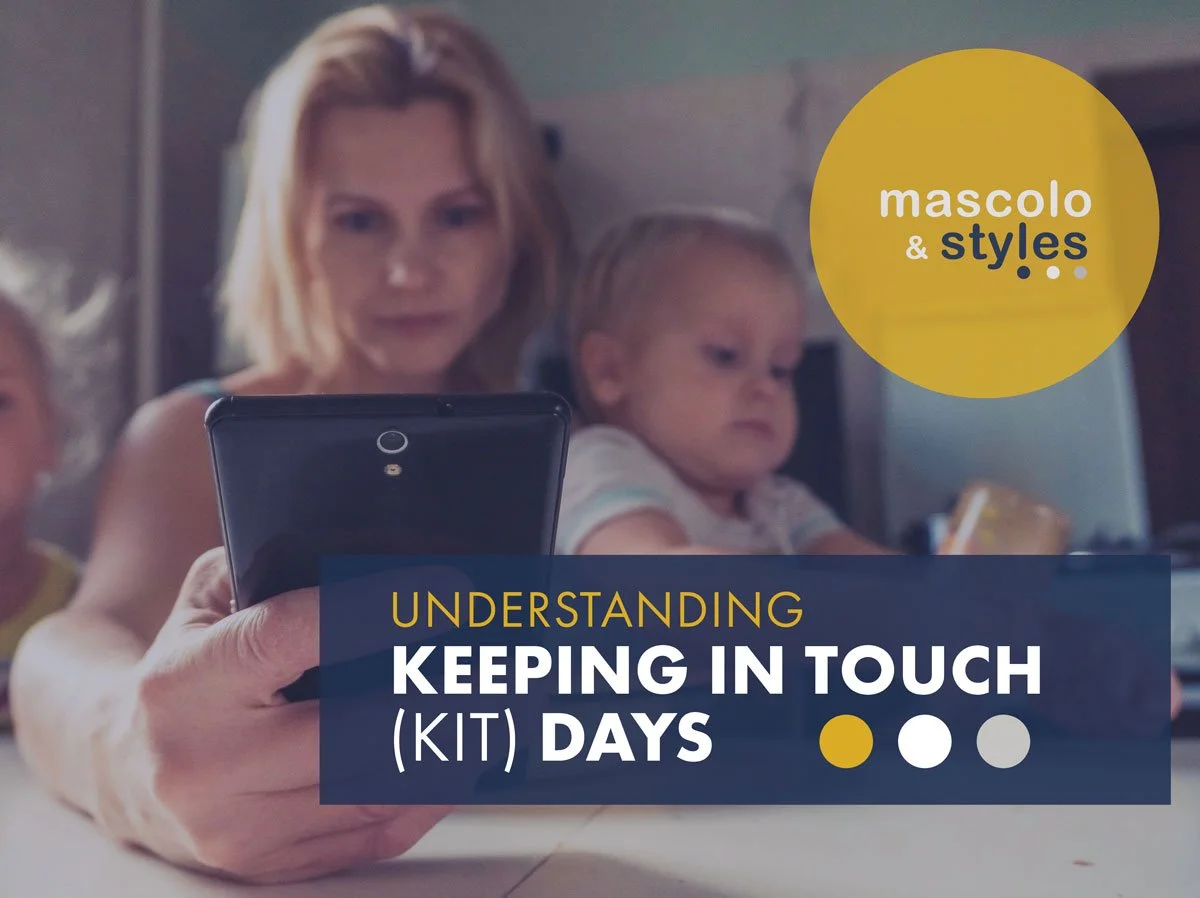Understanding Keeping In Touch (KIT) Days: What Employers and Employees Need to Know
Maternity leave is a crucial time for new parents, but it doesn’t have to mean complete separation from work. Keeping In Touch days, or KIT days, provide a flexible way for employees on maternity leave to stay connected with their workplace without losing their maternity pay. For employers and payroll teams, understanding KIT days is important to handle payroll correctly and support your workforce effectively.
Maternity Leave Entitlement
Eligible employees are entitled to up to 52 weeks of maternity leave, divided into:
Ordinary Maternity Leave: the first 26 weeks
Additional Maternity Leave: the subsequent 26 weeks
While taking the full 52 weeks is optional, employees must take at least 2 weeks off after childbirth (or 4 weeks if they work in a factory)
Statutory Maternity Pay (SMP)
Statutory Maternity Pay is available for up to 39 weeks, structured as follows:
·First 6 weeks: 90% of the employee’s average weekly earnings (before tax)
·Next 33 weeks: £187.18 per week or 90% of the employee’s average weekly earnings, whichever is lower
To qualify for SMP, employees must:
Have been employed continuously for at least 26 weeks up to the 15th week before the expected week of childbirth
Earn at least £125 per week on average (as of April 2025)
Employers must:
Hold the employee’s job or offer a suitable alternative (at same pay and status)
·Maintain contact without pressuring return
·Respect the employee’s rights to return after maternity leave
What Are KIT Days?
Keeping In Touch days are optional workdays that an employee can take during maternity leave. They allow the employee to do some work -whether attending meetings, training sessions, or completing tasks, without ending their maternity leave or losing their maternity pay for that week. The goal is to help employees ease back into work and maintain contact with their employer.
Maternity Allowance and KIT Days: Employed vs. Self-Employed If you’re employed, KIT days work alongside statutory maternity pay or maternity allowance, helping employees stay involved without affecting their entitlement. For self-employed workers claiming maternity allowance, the rules are different, and KIT days don’t apply in the same way. Employers should be aware of these distinctions to provide the right advice.
Employer Obligations During Maternity Leave
During maternity leave, employers must respect the employee’s right to take leave while keeping lines of communication open. They should inform employees about KIT days and how they can be used but cannot force employees to take them. Employers must also continue to comply with payroll regulations and adjust pay accurately when KIT days are worked.
Taking SPLIT or KIT Days While Receiving Maternity Leave Payments
If an employee takes a KIT day or a SPLIT day, while still receiving maternity payments, the employer needs to process this correctly to avoid overpayment or confusion. KIT days allow work without ending maternity pay for that week, but SPLIT days are full working days that affect maternity pay differently.
Are KIT Days a Legal Requirement?
Offering KIT days is not a legal obligation for employers. They are optional, but many companies find them beneficial for maintaining good communication and easing the employee’s return. Employees cannot demand KIT days, and employers don’t have to offer them if they choose not to.
When Can KIT Days Be Taken?
KIT days can be taken any time after the employee has ended the compulsory two-week maternity leave period following birth (or four weeks for factory workers). They can be
used at any point during the maternity leave, up to the day before the employee returns to work.
How Many KIT Days Can an Employee Take?
An employee is allowed up to 10 KIT days during their maternity leave. Any work beyond these 10 days could potentially end the maternity leave early, affecting pay and benefits.
What Counts as a KIT Day?
A KIT day isn’t just a full day at the office. It can be a few hours spent attending training, a team meeting, or completing work tasks agreed with the employer. The key is that the work must be agreed upon and should not amount to a full return to work.
What Is the Difference Between SPLIT and KIT Days?
While KIT days involve limited work during maternity leave, SPLIT days are when an employee works a full day but splits it with maternity leave. SPLIT days count as full working days, meaning the employee is paid for that day, and maternity pay stops for that day. The difference affects payroll and maternity payment calculations.
What Happens if an Employee Uses Up All Their KIT Days?
Once an employee has used all 10 KIT days, they must either return to work fully or remain on maternity leave without working. Any work beyond the KIT days is considered a return to work, ending maternity pay and leave.
Can Employees Use SPLIT and KIT Days Before They Return to Work?
Yes, employees can use both KIT and SPLIT days before their official return to work date, provided it fits within the maternity leave period and is agreed with their employer. This flexibility helps in making the transition smoother.
Do You Get Paid for KIT Days?
Employees must be paid their normal rate for any hours worked during KIT days. Maternity pay continues for the rest of the week if they don’t exceed the KIT days limit, meaning they receive both pay for the KIT day and maternity pay for that week.
Financial Implications of KIT Days
For payroll teams, managing KIT days means accurate tracking of hours worked and correct adjustment of maternity pay. Mistakes can lead to overpayments or underpayments, so clear communication and precise record-keeping are essential.
How Mascolo & Styles Can Help
Managing KIT days and maternity leave can be complex. Mascolo & Styles offers expert payroll support to ensure your company stays compliant and your employees are paid correctly.
If you have questions about KIT days or need support with payroll during maternity leave, get in touch with Mascolo & Styles today - we’re here to make your payroll easier and more reliable.
Frequently Asked Questions About Keeping In Touch (KIT) Days
Q: Are KIT days compulsory for employees or employers? A: No. KIT days are entirely optional. Employers don’t have to offer them, and employees don’t have to take them.
Q: Can KIT days be taken as partial days or only full days? A: KIT days can be taken as full or partial days. Even a few hours of agreed work counts as a KIT day.
Q: What happens to maternity pay if an employee works a KIT day? A: The employee is paid their normal salary for the KIT day and continues to receive maternity pay for that week, as long as they don’t exceed the 10 KIT days limit.
Q: What is the difference between KIT days and SPLIT days? A: KIT days involve working limited hours during maternity leave without ending maternity pay for the week. SPLIT days are full working days during maternity leave and will affect maternity pay for that day.

